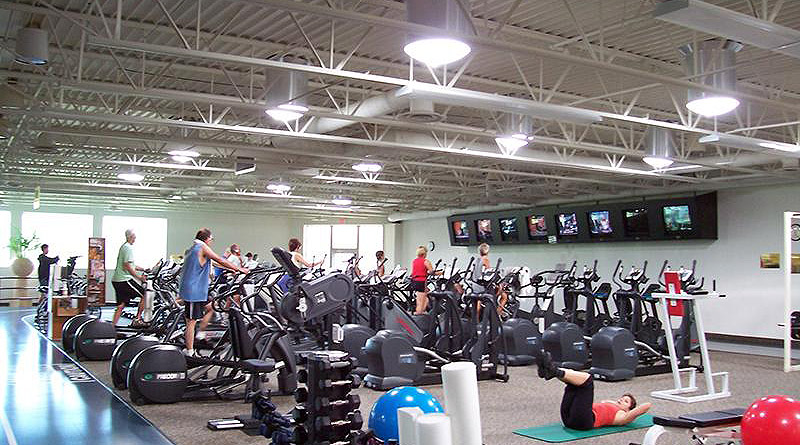Natural Light in Sports and Recreation Spaces: Part 1
By Del Williams

Photo Credit: Solatube
Artificial lighting cannot compare with the aesthetics and sustainable design of bright natural daylight in indoor gyms, sports arenas and recreational spaces.
Daylighting not only enhances the function and beauty of these venues for students, athletes and spectators, but it also makes viewing clearer and colors truer. Functionally, studies have shown that such daylight exposure can also enhance health, energy and mood. Yet too often participants and spectators at these venues find themselves under harsh, artificial electric or fluorescent lighting with minimal exposure to natural light.
New commercial daylighting systems are making the aesthetic as well as design and functional benefits of natural daylight possible at indoor sports, fitness, and recreational venues. They are also enabling a variety of creative architectural expressions such as spotlighting, full daylight, near darkness, and controlled dimming suitable for video presentations and concerts. These systems direct natural daylight far into such indoor settings via rooftop domes and highly reflective tubing, in place of costly electrical lighting.
Now, a number of architects, designers, administrators and facility managers are increasingly turning to such innovative daylighting systems to showcase indoor events.
Compared to the often yellow or bluish hues of artificial lighting, bringing natural daylight into sports and recreation venues improves the aesthetics of big games, workouts and recreational events. It allows the true colors, action and details on the field of play or in the gym to be seen more clearly, easily and vividly with ample, high-quality daylight. Such sustainable design is also providing substantial energy savings and enhancing health and safety.
Beyond Skylights
While traditional skylights have long been used to allow more sunlight to enter indoor spaces, they have a number of drawbacks. From a functional point of view, skylights are prone to leaks, and sunlight directly entering the skylight can leave some indoor areas too sunny and others in shade as the sun crosses the sky. The direct sunlight also allows in a lot of heat as well as UV light. The added heat increases cooling costs, while the UV light fades and deteriorates surfaces.
Unlike skylights that allow sunlight to enter only from upper levels of the building, commercial daylighting systems, also known as Tubular Daylighting Devices (TDDs), can direct natural light through up to 100 feet of highly reflective tubing that can accommodate 45- and even 90-degree angles. The natural light exits modern fixtures to evenly brighten gyms, sports arenas and other indoor recreational spaces.
“By efficiently capturing daylight at the roof, transporting it through reflective tubing, and delivering it inside the gym or sports arena through optically engineered diffusers, a first-rate TDD can be several times more effective than a skylight or window in terms of daylight delivered with minimal heat transfer,” explains Dana Carlson, a product manager at Vista, Calif.-based Solatube.
The company has developed better ways to capture, transfer and deliver sunlight without the heat, UV light, or maintenance of skylights through advanced domes, ultra-reflective tubing, customizable diffusers and other means in the past 25 years.
Unlike traditional skylights, such engineered TDDs are designed to control the problematic aspects of sunlight. They reduce glare and inconsistent light patterns. They also screen infrared rays that can overheat indoor spaces as well as ultraviolet rays that can fade gym and stadium interiors.
Because Solatube’s TDD design rejects solar heat at the rooftop dome and allows essentially just the visible spectrum of light to enter, this reduces indoor heat and cooling costs, which is a boon to those exercising, competing, or otherwise engaged in rigorous sporting events. The results have been showcased in Olympic venues, school gyms, and health clubs worldwide.
Read more on the benefits of TDDs, including several success stories, in Part II of this story, available on Nov. 30 at www.schoolconstructionnews.com.
Del Williams is a technical writer based in Torrance, Calif. He writes about business, technology, health and educational issues.

